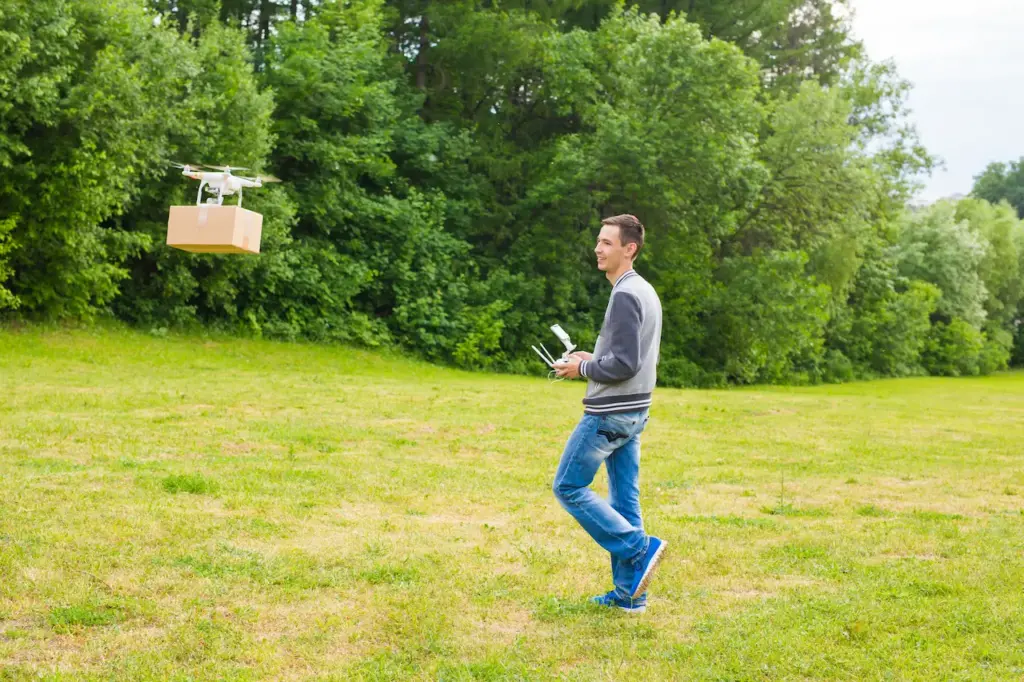Most drone deliveries depart from a warehouse, fly to someone’s home or business, drop off a single item, and then return to their original starting place. From there, it gets a new payload (and perhaps a battery swap) and goes off on its next flight, repeating the process over and over again. But a new triple-drop delivery drone design from Wingcopter could make that process a lot more efficient.

German delivery drone maker Wingcopter this week announced its newest model called the Wingcopter 198, and it has a triple-drop delivery drone mechanism, enabling operations to become much more efficient as it makes up to three stops in one trip.
Wingcopter’s delivery drones are all an electric-power, vertical-take-off-and-landing (eVTOL), fixed-wing drones, meaning they take off straight upwards like a helicopter, but then morph into an aeroplane-style design for more efficient flight once it’s in the air.
What’s new about this latest Wingcopter drone is its triple-drop delivery drone mechanism. The drone can carry three separate payloads that carry up to a combined 6 kilograms (13 pounds) on one battery charge — and it can take them as far as 75 kilometres (47 miles).
Of course, it could also deliver two more medium-sized packages, or one large one, given the combined weight is 6 kilos or less. The new triple delivery process is possible because the Wingcopter 198 has a separate winch through which the extra payloads are lowered. The old model, the Wingcopter 178, only had one winch. By making three deliveries in one area, operations become way more efficient.
“When we did the vaccine delivery trial in Vanuatu, we always had to return to a central hub before flying to the next remote health facility with new children’s vaccines,” Wingcopter CEO Tom Plümmer told The Drone Girl. “It would have been super-helpful if we had had the triple drop mechanism already back then to deliver the vaccines to three villages on the same flight.”
Plümmer said the Wingcopter 198 is the first delivery drone which can deliver and lower several parcels at different locations via separate winches.
How Wingcopter deliveries work
The entire delivery process is fully automatic, allowing one operator to control a fleet of up to 10 Wingcopter 198s simultaneously anywhere in the world via the company’s control station software.
As the drone flies, detect-and-avoid software that combines tech like ADS-B, Remote ID and visual artificial intelligence is interpreting the airspace around the drone to “automatically initiate evasive maneuvers” should the drone get too close to another object in flight like a tree, power line or other flying object.
Once the drone gets to its delivery location, downward-looking cameras use AI-based optical sensing to figure out how to most accurately (and safely) drop the parcel.
Wingcopter says its drones could transport pretty much anything — medical supplies, consumer goods, spare parts and tools, groceries or freshly prepared food. And the company already has a strong history in drone delivery. It has partnered with major players like UPS and has worked on projects like transporting lab samples between the Merck plant in Gernsheim to the company’s headquarters in Darmstadt.
And Wingcopter is certainly a company to keep an eye on. Earlier this year, the company announced that it had secured $22 million in Series A funding.
The post Drone delivery may have gotten way more efficient thanks to Wingcopter’s latest design tweak appeared first on The Drone Girl.






